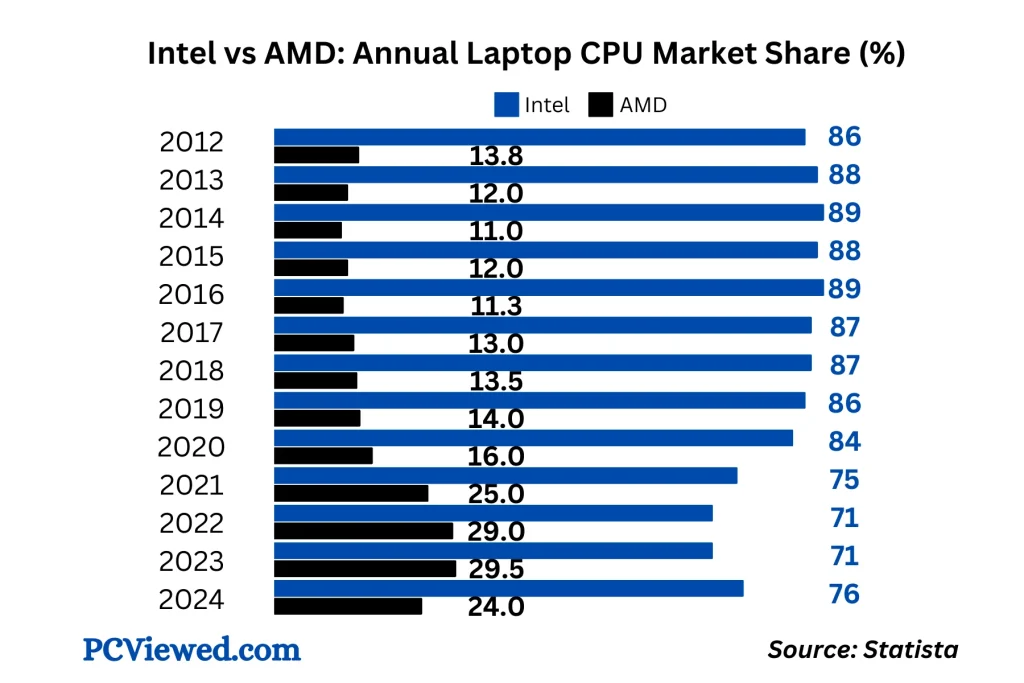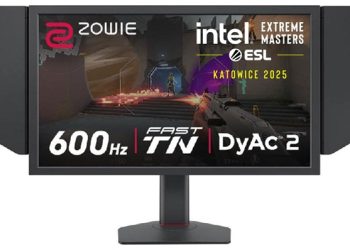Evaluating Gaming CPUs in 2025
In today’s competitive gaming landscape, selecting the right processor is critical for maximizing frame rates, maintaining system stability, and achieving smooth gameplay across AAA titles and eSports environments. This comparison focuses on the current state of Intel vs AMD gaming CPUs, assessing real-world CPU benchmarks and evaluating FPS performance across different titles and resolutions.

AMD and Intel in the 2025 Gaming Market
Both Intel and AMD have released compelling processors in recent years. Intel continues to push hybrid-core architectures with its 14th and 15th Gen chips, while AMD’s Ryzen 7000 and 8000 series leverage 5nm technology and efficient chiplet design.
| Brand | Recent Flagships | Notable Tech | Socket |
|---|---|---|---|
| Intel | Core i9-14900K, i7-14700KF | Performance + Efficiency cores, Intel 7 process | LGA 1700 |
| AMD | Ryzen 9 7950X3D, 7800X3D | 3D V-Cache, Chiplet architecture | AM5 |
Intel typically offers strong single-core performance, ideal for high FPS in fast-paced games. AMD, particularly with its 3D V-Cache chips, excels in consistent frame delivery and low latency, crucial for strategy and story-rich titles.
Gaming Benchmarks: FPS Performance in Popular Titles
To understand Intel vs AMD gaming superiority, we must explore CPU benchmarks in real-world scenarios using identical GPU setups.
1080p Gaming (GPU-unbound)
| Game | Intel Core i9-14900K (FPS avg) | AMD Ryzen 9 7950X3D (FPS avg) |
|---|---|---|
| Call of Duty: MW3 | 265 | 258 |
| Cyberpunk 2077 | 162 | 170 |
| Counter-Strike 2 | 795 | 775 |
| Horizon Forbidden West | 143 | 149 |
| Starfield | 125 | 137 |
At 1080p, AMD’s 7950X3D closes the gap or exceeds Intel’s top-end chips in select titles due to 3D V-Cache, which improves CPU-GPU data fetch rates. In highly-threaded games or those utilizing DirectX 12 or Vulkan, AMD often leads.
FPS Stability: 1% Lows and Frame Consistency
Average FPS is not the sole metric of gaming fluidity. 1% lows reflect frame time stability and affect game feel. AMD’s X3D chips often showcase superior 1% lows due to their massive L3 cache.
| Game | Intel i7-14700K (1% Low) | AMD 7800X3D (1% Low) |
|---|---|---|
| Fortnite | 115 | 122 |
| Baldur’s Gate 3 | 72 | 89 |
| F1 24 | 148 | 151 |
These results confirm that AMD CPUs with 3D cache maintain higher minimum frame rates, especially in open-world or CPU-intensive titles.
Thermal and Power Efficiency Considerations
Gaming doesn’t just demand raw FPS—it also raises thermal and energy concerns.
TDP Comparison Under Load (Cinebench R23 Multithreaded)
| Processor | Peak Power Draw (W) | Average Temp (°C, Air Cooled) |
|---|---|---|
| Intel i9-14900K | 300W | 95°C |
| AMD 7950X3D | 140W | 75°C |
AMD processors deliver similar or better gaming results with significantly lower power draw and heat generation. This translates into quieter operation and less need for high-end cooling.
Platform Longevity and Upgrade Path
Intel: LGA 1700 Ending Soon
Intel’s 14th Gen is likely the last generation on LGA 1700. Future CPUs are expected to shift to LGA 1851, limiting forward compatibility.
AMD: AM5 Future-Proofing
AMD promises long-term support for AM5, meaning the current investment in motherboards could span several CPU generations, making AMD more appealing for budget-conscious upgraders.
Best CPUs for Gaming by Segment
| Budget | Intel Pick | AMD Pick | Notes |
|---|---|---|---|
| Entry | i5-13400F | Ryzen 5 7600 | Great for 1080p gaming |
| Midrange | i5-14600K | Ryzen 7 7800X3D | Ideal for esports and AAA balance |
| High-End | i9-14900K | Ryzen 9 7950X3D | Top-tier FPS and future-proofing |
Overclocking and Customization Potential
Intel’s K-series processors offer robust overclocking headroom, but require powerful cooling. AMD’s PBO (Precision Boost Overdrive) and Curve Optimizer allow easy performance tuning with less thermal penalty, especially on the 3D V-Cache models.
Gaming Use Cases: Which CPU is Best?
-
For eSports (Valorant, CS2, Fortnite): Intel’s high frequency chips like the 14700KF shine with ultra-high FPS.
-
For Open-World and RPGs (Elden Ring, Starfield): AMD’s 3D cache models offer smoother frame pacing and fewer drops.
-
For Game Streaming: AMD’s extra cache and efficient thread management help reduce encoding lag.
Choosing the Right Gaming CPU
| Feature | Intel Strength | AMD Strength |
|---|---|---|
| Single-Core Speed | ✅ | ✅ |
| Multithreading | ✅ | ✅ |
| FPS in eSports | ✅ | 👍 |
| FPS in AAA Titles | 👍 | ✅ |
| Power Efficiency | ❌ | ✅ |
| Platform Longevity | ❌ | ✅ |
| 1% Frame Stability | 👍 | ✅ |
| Price-to-Performance | ✅ | ✅ |
Intel vs AMD for Gaming in 2025
When evaluating Intel vs AMD gaming CPUs, there’s no universal winner. Instead, gamers must match their needs with CPU characteristics:
-
For competitive gamers prioritizing peak FPS, Intel’s i7 and i9 processors remain unmatched.
-
For immersive gaming and future platform support, AMD’s X3D CPUs deliver consistent performance with lower power draw and longer motherboard support.
Gamers focused on frame stability, platform value, and thermals may prefer AMD’s 7800X3D, while those chasing maximum peak FPS in eSports should consider Intel’s high-clocked 14th Gen processors.






